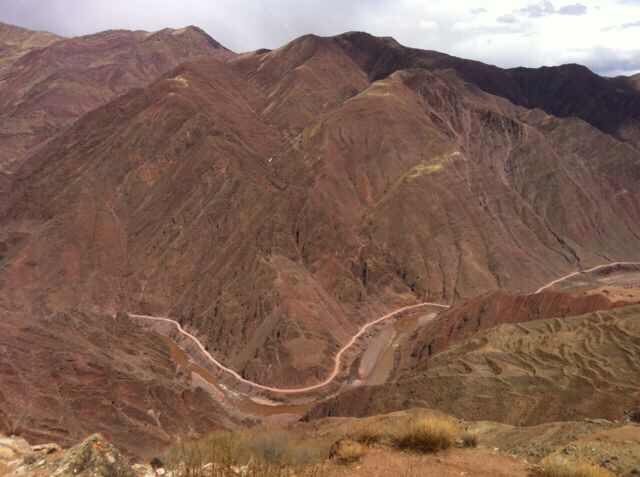


In 1198, Drogon Rinchen was invited to teach in Tsomdo village in Markham County, where he was very surprised to find it a remarkable place that produced outstanding people. He knew the Martsang Kagyu School would flourish and advance if he established a monastery in Tsomdo village, so he returned to Shogun Monastery with an agreement from his master Choje Marpa.
In 1200, Drogon Rinchen (1170~1249) established the Tsomdo Monastery in Tsomdo village in Markham. This became the second Monastery of the Martsang Kagyu lineage. Tsomdo Monastery and Shogun Monastery were both representative monasteries for the Martsang Kagyu School.
Inside the Main Hall of Tsomdo Monastery, two-story high Buddha statues rendered incomparable solemnity and compassion, and awakened bliss for many people. Moreover, Drogon Rinchen meticulously cast and consecrated Buddha statues, including Vajrapani, Tara, Tso, Avalokiteśvara, and Manjusri. These statues inspired great enjoyment for the public, generating a peaceful and solemn state.
In appreciation of the teaching grace of the Gurus, and to sustain the preservation of important complete teachings, Drogon Rinchen used gold and silver casts to inscribe 180 Buddhist Classics respectively, without hesitation for collection and circulation.
The number of monks in Tsomdo Monastery reached one thousand three hundred, with 20% of the practitioners studying the preliminary stage on retreat in the Rear Mountain of the monastery. As years went by, Drogon Rinchen’s reputation as a succinct and skilful teacher became well known, and the number of people hoping to come to Tsomdo Monastery to seek Buddhism increased quickly day by day. The excellent status of Drogon Rinpoche accumulated a large following, and more and more practitioners in different regions requested he open new subsidiaries. Drogon Rinchen spent his time promoting the Martsang Kagyu sect of Buddhism at Tsomdo Monastery, along with all the subsidiaries. Further, practitioners who went on retreat and achieved great realization are too numerous to mention. At this time, the public used a metaphor for the Martsang teachings; they described them as radiating sunshine on every corner of Tibet.
When the Emperor of the Yuan Dynasty invited Sakya Pandita to promote Buddhism in China, Sakya Pandita specifically delivered a letter inscribed with Buddhist Classics and gold to Drogon Rinchen. The letter mentioned that he would visit Drogon Rinchen before his trip to China.
In 1244, Drogon Rinchen led over one thousand monks to welcome Sakya Pandita and Chogyal Phatpa on their visit to Shogun monastery. It was a joyful meeting full of meaningful discussion between excellent and wise practitioners. Sakya Pandita was highly appreciative and joyful for the various actions that Drogon Rinchen undertook to promote Buddhism. In his intention to help Shogun Monastery and Tsomdo Monastery and its subsidiaries, he specifically requested that Drogon Rinchen send a disciple to accompany them when they visited the Emperor of the Yuan Dynasty. This was to further assist them with disseminating the teachings of Martsang Kagyu to the Yuan Dynasty. However, while Drogon Rinchen appreciated Sakya Pandita’s kindness, he did not assign any disciple to accompany them on their journey.
Shogun Monastery and Tsomdo Monastery developed a close relationship; like the sun and moon which mutually reflected on each other. The two monasteries gained a complete understanding of the teachings and history of the Martsang Kagyu Lineage, and as Choje Marpa prophesised, Tsomdo Monastery kept and promoted the Martsang Kagyu lineage forever. The lineage continued to be promoted by disciples of Tsomdo Monastery and the lineage holder today is the 12th Gangri Karma Rinpoche, who is the reincarnation of Drogon Rinchen.
Tsomdo Monastery former site in Markham, Tibet.
